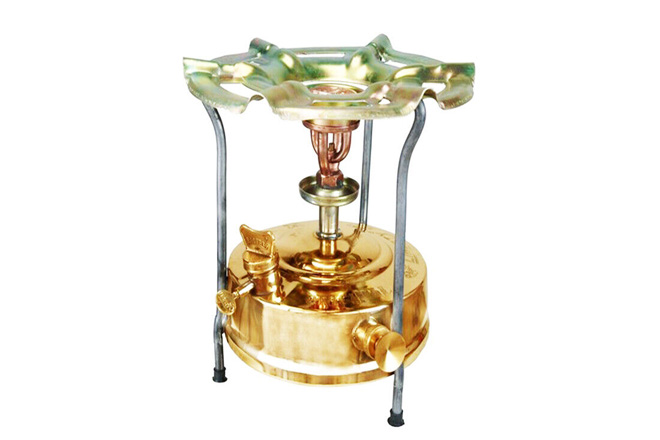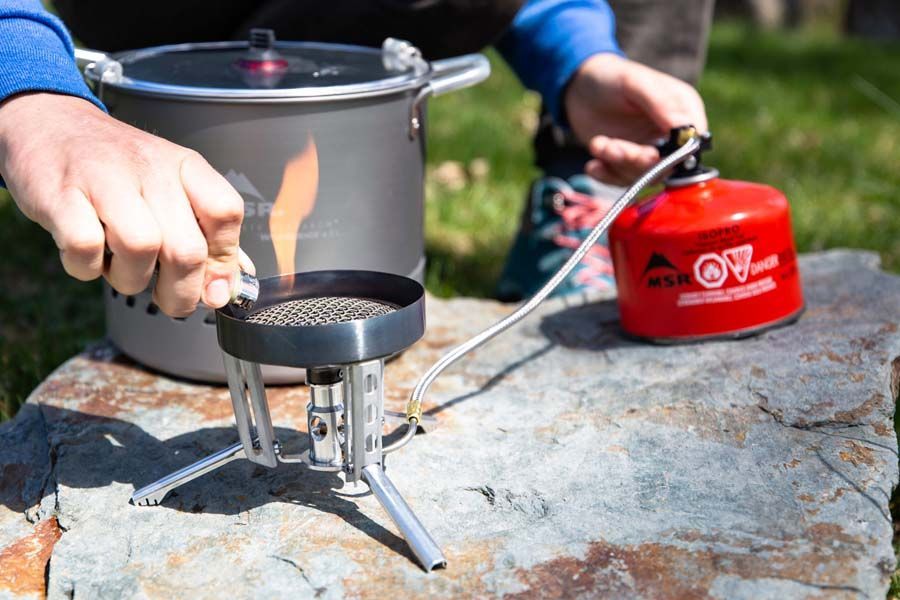Choosing a camping or backpacking stove isn't an easy task as you have to consider not only the type of stove you wish to use but also the type of fuel that the stove uses.
In the UK, there are 5 main types of fuels used in camping stoves:
- 1. Liquefied Gas (Butane, Propane
- 2. Alcohol/Spirit
- 3. Chemical Solid Fuels
- 4. Wood
- 5. Paraffin
Liquefied gas
Liquefied gas stoves are what most people in the UK are referring to when they talk about camping stoves. The most well-known brand, omnipresent in most outdoors shops is Coleman. Coleman make larger base camp stoves and smaller canister stoves. Liquefied stoves are popular for a reason.
They can kick out a lot of heat and are accepted as the quickest at cooking when camping. You've also got a good level of control over the flame so it's easy to create a simmer. If you've got a base camp stove you'll be able to cook multiples things at once, at the cost of portability. (You won't be taking one backpacking with you!)

Not all gas stoves are of this size and you can find many smaller examples that offer similar flame adjustment, but with the trade-off of heating only one pan at a time. These smaller stoves may be portable in themselves but don’t forget you need to pack enough gas bottles to last your trip.
This brings us to the downside of all liquefied gas stoves, the fuel.
Gas stoves are powered by gas canisters which can be expensive, bulky to carry, and are difficult to judge when they are nearly empty, there Is no way to actually see the level of fuel remaining. This often means you will take more than you need, just in case that first gas bottle you packed was actually only half full.
Alcohol Stoves
Alcohol stoves have been popular with lightweight backpackers for years, they are light, simple and very easy to use. A Trangia is an excellent example of a well know alcohol stove, although it has traditionally been run on methylated spirits it works just as well (and probably more cleanly) with Bioethanol.
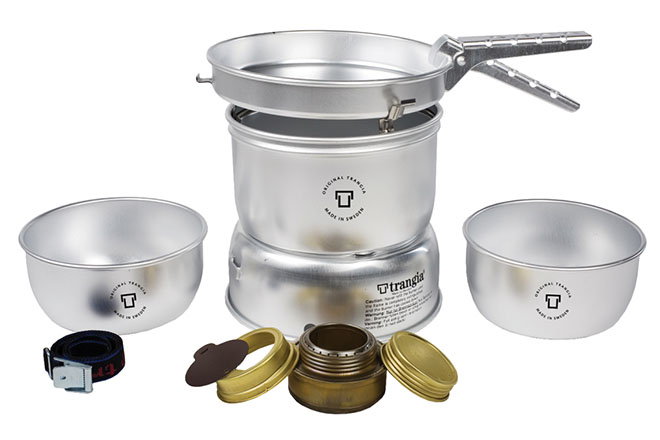
Also if you are in a pinch, a serviceable one-use alcohol stove can be made in the field for less than £5. There is an abundance of DIY tutorials online showing this “Soda can” stove method, although we would say that buying a dedicated stove that has been designed for use with alcohol fuel is defiantly a safer option.
Not only are alcohol stoves the most environmentally friendly option of the ones on our list, it is also incredibly easy to get your hands on the fuel from local camping shops or online stores such as ours, where we offer free next-day delivery on the majority of orders.
Chemical Solid Fuels
Chemical solid fuels are often called hexi or hexamine blocks. Esbit stoves are the most well-known stoves designed to burn chemical solid fuels. The pocket stoves are extremely lightweight, simple in construction and low-cost.
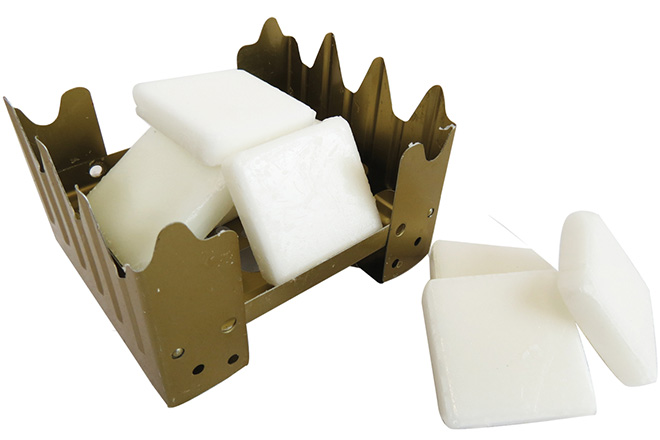
Hexi blocks burn hot and quick, but can leave a lot of soot and residue behind, making them not so great for the environment. They also give off chemicals as they burn which if you are not careful could come into contact with your food.
Because of their lightweight nature, these are often used as a backup stoves that can be put in a pouch and used when the primary stove fails.
Wood Stoves
Wood stoves are possibly the most useful as the fuel is available in abundance, if you run out, you simply have to pick up a few more twigs and sticks from the ground. They do however give off a lot of soot and smoke and can adversely affect the taste of some foods. They also leave behind ash and can be a bit of a pain to clean.
With any fire or stove, you need to be careful of the surrounding area and ensure you don’t accidentally cause your fire to spread. This is particularly important with a wood stove as many don’t have an easy way to extinguish the flame as you would find on a gas canister or Trangia pot.
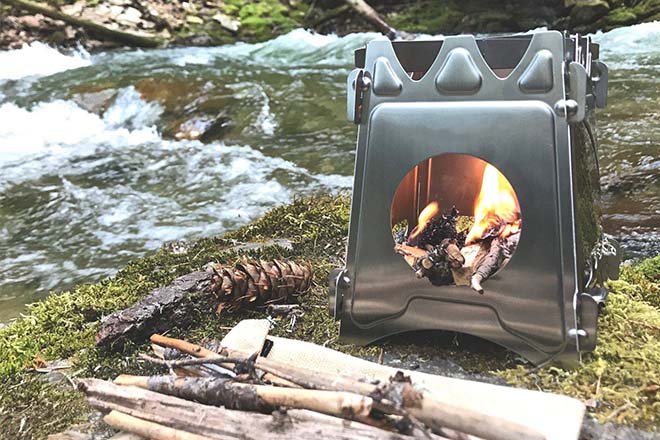
Paraffin Stoves
Paraffin stoves are quite uncommon and you're more likely to see paraffin fuelled lanterns than stoves. Paraffin stoves were once as common as liquefied gas stoves are today, but their use has waned dramatically and the fuel is becoming increasingly difficult to find.
